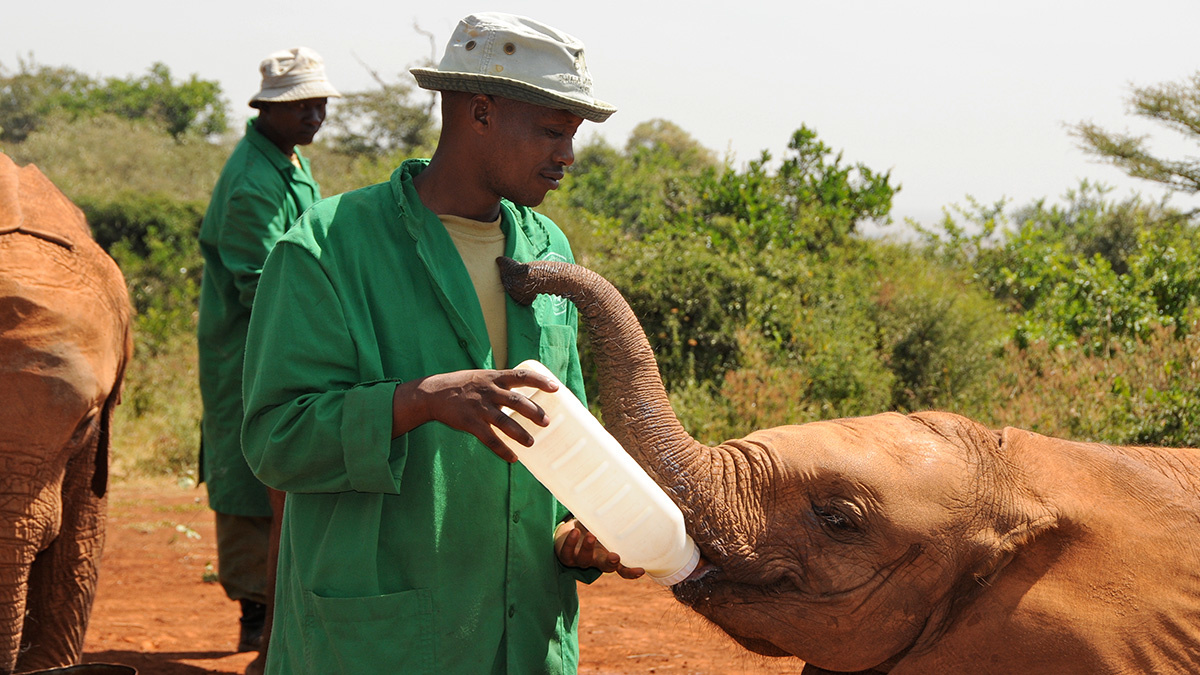

The Sheldrick Wildlife Trust in Kenya rescues and rears orphaned elephants and rhinos. Wendy Stone / Corbis via Getty Images
If you care about the planet, you’re probably thinking that the holidays are not a great time of year for the environment. There’s more mail and package deliveries, homes and buildings are decorated with holiday lights, people travel more, and there’s so much shopping as people buy presents for friends and family. So what’s an environmentally conscious holiday-lover supposed to do?
The holidays are a great time of year to consider giving a different kind of gift: a donation to a nonprofit organization. Whether you make a personal donation on Giving Tuesday or you donate in a loved one’s name instead of buying a present, you can still share the spirit of the holiday. To get your nonprofit gift-giving off to a great start, here the EcoWatch team recommends a few organizations we like and why these causes matter.
Jordan Davidson, Freelance Reporter
Sheldrick Wildlife Trust
The Sheldrick Wildlife Trust supports the conservation, preservation and protection of wildlife habitats in East Africa. The Kenya-based organization safeguards the natural habitat of elephants and rhinos while protecting them from poaching. It rescues and rears orphaned elephants and rhinos. In fact, it operates the most successful elephant orphan rescue and rehabilitation center in the world.
Every year, my kids scroll through the orphans, watch a video about their rescue and pick one to foster. In return, we receive monthly updates on the animal’s rehabilitation, including their diet, medical needs, how they socialize and the other elephants they have made friends with.
Olivia Rosane, Freelance Reporter
Indigenous Environmental Network
I first became aware of the Indigenous Environmental Network (IEN) during the fight against the Dakota Access Pipeline, but the nonprofit dates back to 1990 and has been working for almost 30 years to resist environmental injustice and build sustainable indigenous communities. Sometimes, everything that’s wrong with the dominant culture’s relationship to the Earth feels overwhelming. IEN tackles all of it, from deforestation to toxic waste dumping to fossil fuel extraction, and it does so while centering an indigenous worldview that offers a real alternative.
This holiday season, I am giving a gift to the future and donating to support their work. “By attempting to fulfill our responsibility to defend our mother earth we are assuring the survival of our unborn generations,” their Unifying Principles read.
Jordan Simmons, Associate Editor
Amazon Aid Foundation
The Amazon Aid Foundation is empowering individuals, NGOS and governments to protect and revitalize the Amazon rainforest. In projects such as the RIVER OF GOLD documentary, they risk their lives to enter the grounds of illegal gold mining in Peru’s Amazon rainforest to provide a disturbing account of how illegal mining causes an increase in deforestation and wildfires. The foundation provides information and resources such as the Buyer’s Guide that can be used to not only become more conscious consumers, but to spread this message far and wide.
To express my gratitude for having more of an open mind and an understanding of my role as a consumer of gold, I have begun a monthly donation to the Amazon Aid Foundation. I look forward to the day I take this gift to Earth a step further by traveling to Madre de Dios region of southeastern Peru to join their reforestation project.
Chris McDermott, News Editor
Back to Nature Wildlife Refuge
The Back to Nature Wildlife Refuge in Orlando, Florida helps injured, orphaned and abandoned wildlife to recover. They describe their goal as “rescue, raise, rehabilitate and release” and they save thousands of animals a year. They have been especially busy after Florida storms that disrupt so many habitats.
I’ve supported this organization and have brought injured birds and squirrels to the refuge. The people who work there always inspire confidence that they’ll give them the best care.

 233k
233k  41k
41k  Subscribe
Subscribe 